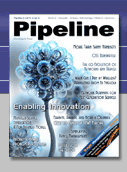|
|

article page
| 1
| 2
| 3
|
there really no business case for this? Or are telecoms not doing enough to mash-up the infrastructure into a tidy package that makes it easy for large enterprises to adopt? The answer is all of the above, and none of the above. What that probably means is that the ground floor opportunity is open to telecoms right now.
Where It's Happening
There are examples in the United States of hip restaurants that use text messaging for take out and for in-restaurant orders. In Norway and in the UK, Telenor and Orange UK respectively have created content sites and commerce communities where partners can sign up and sell their products through the telecoms' network and financial infrastructure, based on a well defined settlement model. "Orange UK has hundreds of content partners that sell content through mobile commerce or through their walled garden," says Brian Pawlus, director of product marketing for Oracle Communications. He says that there are examples of ring tones, friend chat, and other such services, "but the larger big name enterprises don't seem to be there."
Pawlus explains that like Acision, Oracle sees "a lot of interest from our customers about doing financial transactions with a mobile phone." That customer base expands well beyond the carrier domain to include large enterprises of all stripes. The issue is that most of them are in wait-and-see mode. "They want to see how the market responds before they adopt that sort of thing," he says. He adds, however, that "end users are becoming more receptive to using their mobile device to use the Internet, and that opens up a lot of transactions."
In other words, as a greater number of handsets become Internet capable, and have more true Internet capabilities like the iPhone, the greater the critical mass of users can become who want to make purchases through the mobile Internet, just as they might through a PC. Pawlus also agrees that he's seeing more interest from telecoms in driving mobile advertising, and while they're largely in the experimental stage now, the desire is there to figure out what methods work best to help grab some of the "impulse buy" action.
In the City
Mobile payment technology may also advance through municipal applications. For example, Belgacom, Belgium's major telecom provider, recently acquired a company with SMS payment technology. This capability set has been integrated into Belgacom's infrastructure, explains Benoit Godenir, IT and network transformation strategist for Belgacom Group, that has allowed it to launch mobile payment for rail, bus, and parking fares in five cities in Belgium. This will expand to cover toll tag payments on motorways as well.
In the United States, cities like New York and Chicago have had toll tag and fare card systems in place for years. Any commuter can buy a fare card with cash, debit or credit card
|
|
Letting this opportunity slide to the handful of start-ups who are trying to snag it would be a mistake – in the same sense as the missed traffic camera opportunity we covered last month. |
|

from a machine on the platform, or reload a frequent rider card or toll tag account online, but the leap to wireless payments hasn't been made just yet. This may represent an opportunity for telecoms to step in, help to habituate high-quality customers to paying with mobile phones, and thus open the doors to the larger m-commerce opportunity.
Two small companies, My Tango and Go Mobo, are both trying to jump on this opportunity before telecoms get there. My Tango appears to be relatively small thus far, but Go Mobo has received significant publicity in the mainstream press. According to fastcasual.com, an online magazine covering the fast casual restaurant market, Go Mobo already boasts customers such as Subway Restaurants, Papa John's, Dunkin' Donuts, Popeye's and Quiznos. Mobile payments are not part of these national chains' standard offering. You still can't buy a foot long tuna sub through your mobile phone at a Subway in Chicago, but all signs point to some of the individual franchise owners beginning to move in this direction, and working with a start-up company – rather than a telecom giant – to make it happen.
The Upside for Telecom and OSS
The positive spin here is that mobile payments are a nascent opportunity that is just about ready to pop. There are enough early signs in the market to demonstrate that retailers and consumers are interested in these applications and willing to use them, especially when they're in a hurry. Nearly everyone's schedule is becoming busier these days and the demand for convenience always seems to increase, so it's likely the right time for telecoms to start pulling the building blocks together into well defined packages that are easy for the big players to roll out when they decide to do so. Letting this opportunity slide to the handful of start-ups who are trying to snag it would be a mistake – in the same sense as the missed traffic camera opportunity we covered last month.
For OSS providers and IT shops, this is a chance to shine. With all of the work that's gone into service oriented architectures (SOA), service delivery platforms (SDP), and service delivery framework (SDF) efforts like the TM Forum's, it's time for the OSS community to deliver on its promises. For telecom to succeed in the mobile payments business, and many other application spaces, the integration, automation, and componentization approach to new service creation and fulfillment need to work well. Hiding in the back office and avoiding blame is no longer an option. It's time for IT to be the star point guard, so to speak, and set up the business units they support to make the big score.
article page
| 1
| 2
| 3
| |
|
|
|

|
|
|



